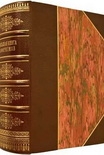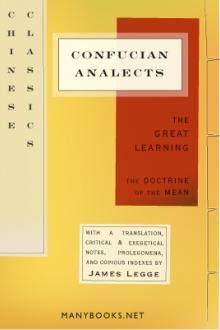Myths and Legends of China E. Werner (best reads of all time .TXT) 📖

- Author: E. Werner
Book online «Myths and Legends of China E. Werner (best reads of all time .TXT) 📖». Author E. Werner
4 Slave-girls do not have their feet compressed.
5 Wherein resides an old gentleman who ties together with a red cord the feet of those destined to become man and wife. From this bond there is no escape, no matter what distance may separate the affianced pair.
6 This proceeding is highly improper, but is ‘winked at’ in a large majority of Chinese betrothals.
7 The usual occupation of poor scholars who are ashamed to go into trade and who have not enterprise enough to start as doctors or fortune-tellers. Besides painting pictures and fans, and illustrating books, these men write fancy scrolls in the various ornamental styles so much prized by the Chinese; they keep accounts for people, and write or read business and private letters for the illiterate masses.
8 Say about £10.
9 Alchemy is first mentioned in Chinese history B.C. 133, and was widely cultivated in China during the Han dynasty by priests of the Taoist religion.
10 Kuan Chung and Pao Shu are the Chinese types of friendship. They were two statesmen of considerable ability who flourished in the seventh century B.C.
11 These are used, together with a heavy wooden bâton, by the Chinese washerman, the effect being most disastrous to a European wardrobe.
12 To provide coffins for poor people has ever been regarded as an act of transcendent merit. The tornado at Canton in April 1878, in which several thousand lives were lost, afforded an admirable opportunity for the exercise of this form of charity—an opportunity which was largely taken advantage of by the benevolent.
13 For usurping its prerogative by allowing Chia to obtain wealth.
Chapter XVI
Miscellaneous Legends
The Unnatural People
The Shan hai ching, or Hill and River Classic, contains descriptions of some curious people supposed to inhabit the regions on the maps represented on the nine tripod vases of the Great Yü, first emperor of the Hsia dynasty.
The Pygmies
The pygmies inhabit many mountainous regions of the Empire, but are few in number. They are less than nine inches high, but are well formed. They live in thatched houses that resemble ants’ nests. When they walk out they go in companies of from six to ten, joining hands in a line for mutual protection against birds that might carry them away, or other creatures that might attack them. Their tone of voice is too low to be distinguished by an ordinary human ear. They occupy themselves in working in wood, gold, silver, and precious stones, but a small proportion are tillers of the soil. They wear clothes of a red colour. The sexes are distinguishable by a slight beard on the men, and long tresses on the women, the latter in some cases reaching four to five inches in length. Their heads are unduly large, being quite out of proportion to their small bodies. A husband and wife usually go about hand in hand. A Hakka charcoal-burner once found three of the children playing in his tobacco-box. He kept them there, and afterward, when he was showing them to a friend, he laughed so that drops of saliva flew from his mouth and shot two of them dead. He then begged his friend to take the third and put it in a Page 387place of safety before he should laugh again. His friend attempted to lift it from the box, but it died on being touched.
The Giants
In the Country of the Giants the people are fifty feet in height. Their footprints are six feet in length. Their teeth are like those of a saw. Their finger-nails present the appearance of hooked claws, while their diet consists wholly of uncooked animal food. Their eyebrows are of such length as to protrude from the front of the carts in which they ride, large though it is necessary for these vehicles to be. Their bodies are covered with long black hair resembling that of the bear. They live to the advanced age of eighteen thousand years. Though cannibals, they never eat members of their own tribe, confining their indulgence in human flesh chiefly to enemies taken in battle. Their country extends some thousands of miles along certain mountain ranges in North-eastern Asia, in the passes of which they have strong iron gates, easy to close, but difficult to open; hence, though their neighbours maintain large standing armies, they have thus far never been conquered.
The Headless People
The Headless People inhabit the Long Sheep range, to which their ancestors were banished in the remote past for an offence against the gods. One of the said ancestors had entered into a controversy with the rulers of the heavens, and they in their anger had transformed his two breasts into eyes and his navel into a mouth, removed his head, leaving him without nose and ears, thus cutting him off from smell and sound, and banished him to the Page 388Long Sheep Mountains, where with a shield and axe, the only weapons vouchsafed to the people of the Headless Country, he and his posterity were compelled to defend themselves from their enemies and provide their subsistence. This, however, does not in the least seem to have affected their tempers, as their bodies are wreathed in perpetual smiles, except when they flourish their warlike weapons on the approach of an enemy. They are not without understanding, because, according to Chinese notions of physiology, “their bellies are full of wisdom.”
The Armless People
In the Mountains of the Sun and Moon, which are in the Centre of the Great Waste, are the people who have mo arms, but whose legs instead grow out of their shoulders. They pick flowers with their toes. They bow by raising the body horizontal with the shoulders, thus turning the face to the ground.
The Long-armed and Long-legged People
The Long-armed People are about thirty feet high, their arms reaching from the shoulders to the ground. Once when a company of explorers was passing through the country which borders on the Eastern Sea they inquired





Comments (0)